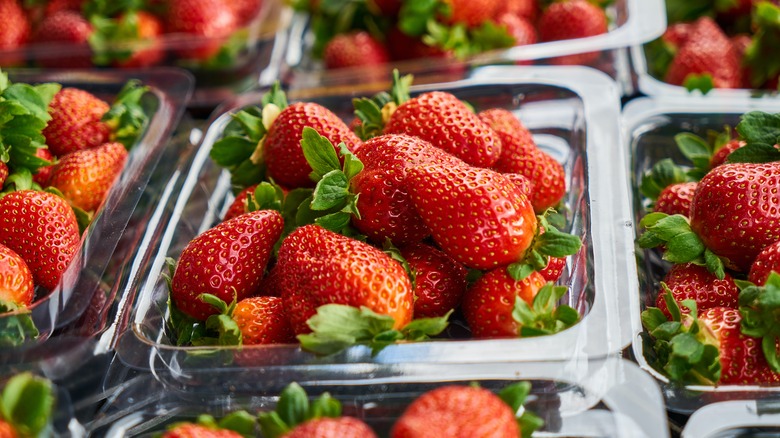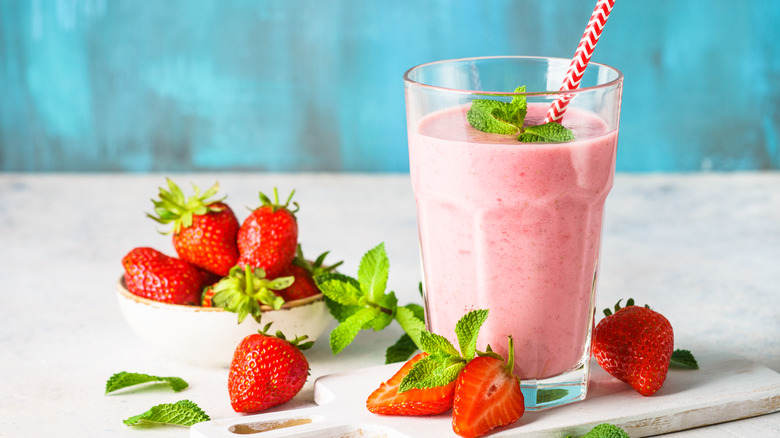Look Out For One Strawberry Red Flag On Your Next Grocery Run
It can be difficult to know how to choose the absolute best strawberries. You can thump a melon, squeeze a peach, or sniff a mango, but none of these fruit ripeness techniques will work on a container of strawberries. However, there is one way to determine the quality of strawberries before you buy them that you may not have thought of.
The best way to know if a carton of strawberries is past its prime is to turn it over. Every container has an absorbent pad in the bottom to wick moisture away from the fruit. If the pad is wet or stained with strawberry juice, that's a red flag, and you may want to leave it at the grocery store.
The strawberries should also not stick to the pad. If they do, this means the sticky juice has soaked it. Buying one of these may result in an unhappy surprise when you open the container.
Moisture is the enemy to fresh strawberries
That sticky juice is what happens when strawberries start to break down. This can happen because they're past the point of freshness or if they got excessively jostled during transport. Either way, overripe and bruised berries are not what you want to buy, especially when the next step is usually mold growth due to the moisture in contact with the fruit.
It's important to keep strawberries as dry as possible. They shouldn't be washed until you're ready to use them. Store them in the original carton or buy a special strawberry container designed to allow airflow, which will keep the fruit fresh for a while and keep mold at bay.
If you do find yourself with some overripe (not moldy) strawberries, don't worry. All is not lost. Overripe strawberries are the perfect addition to a delicious berry smoothie, or try your hand at making some fresh strawberry jam. Both options are excellent solutions to reducing food waste while enjoying this delicious fruit.

